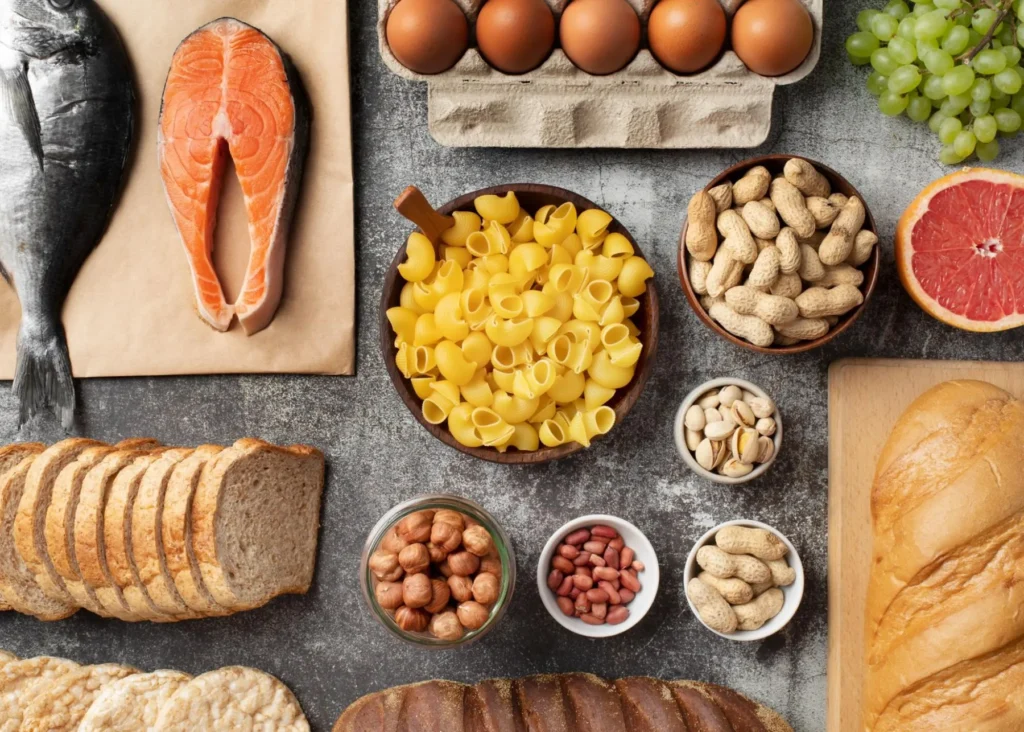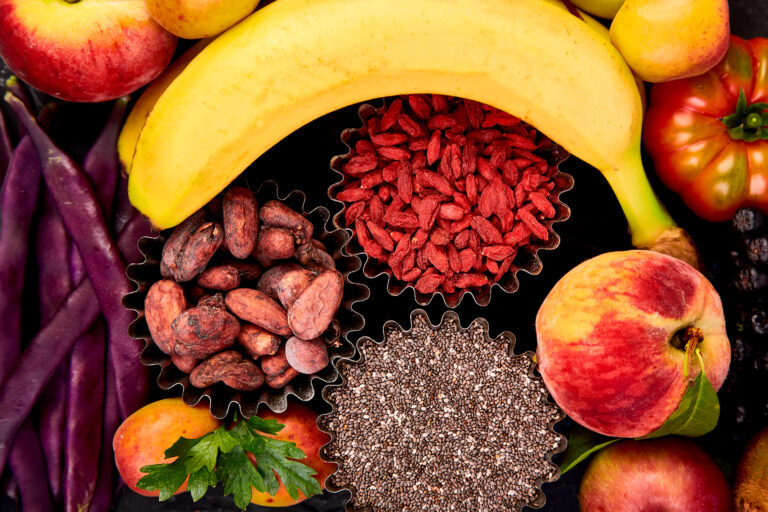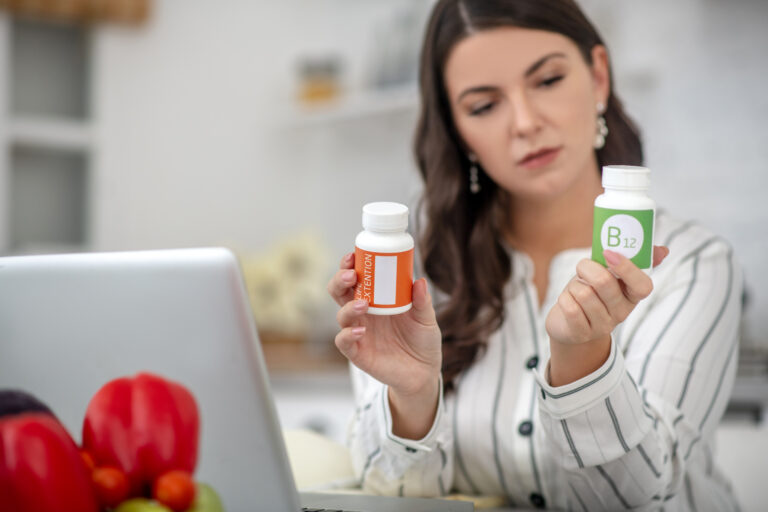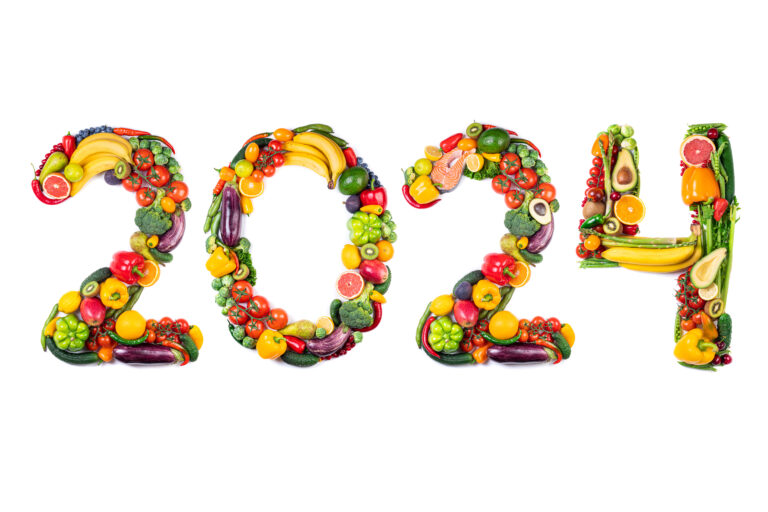Introduction
It is essential to get enough protein because it is the building block of all cells in your body. Repairing cells, building muscle, and keeping hormones in order are all helped by it. Ensuring enough protein for health and fitness fans is critical to reaching their eating and physical goals. Let’s explore the treasure trove of your local grocery store and find the 10 best high-protein diet foods that are easy to find and good for you.
Benefits of Incorporating High Protein Foods
Eating things high in protein can be good for your health in many ways:
Supports Muscle Growth and Repair:
Protein-rich foods are essential for athletes and people who do a lot of physical action because they help muscles grow and fix themselves.
Aids in Weight Management:
Protein has a more considerable thermic effect than fats or carbs, meaning breaking it down takes more energy. Increasing your metabolism and feeling full can help you keep your weight in check.
Improves Bone Health:
Getting enough protein may help keep your bones healthy and lower your chance of osteoporosis and bone injuries as you age.
Stabilizes Blood Sugar Levels:
Protein doesn’t significantly affect blood sugar, so it’s essential for people with diabetes or insulin resistance.
Supports a Healthy Immune System:
It needs proteins to make antibodies and immune system cells, which help keep the body healthy.
Enhances Hormonal Balance:
Hormones are mostly made up of amino acids that come from protein, so eating enough protein is essential for keeping hormones working correctly.
Lean Meats:
Lean foods are a great way to get high-quality protein and can be essential to a healthy diet. These foods have been cleared of extra fat and are full of all the amino acids your body needs to work at its best:
Chicken Breast:
Skinless chicken breast is a standard food for people on high-protein diets. It has only about 31 grams of protein per 100 grams and almost no fat.
Turkey:
Turkey, especially white meat, is an excellent choice for people who want to build muscle without eating too many calories because it is high in protein and low in fat.
Lean Beef:
Cuts like steak and tenderloin have less fat but still have a lot of energy and essential nutrients like iron and vitamin B12.
Pork Tenderloin:
This choice is often ignored, but it is high in protein and low in calories compared to other cuts of pork. This makes it a great addition to a low-carb, high-protein diet.
Fish:
Fish, especially fatty ones like salmon, tuna, and mackerel, are great for your health because they are high in protein and omega-3 fatty acids.
Eating a range of these lean foods ensures you get enough protein and keep your fat and calorie intake in check.
Fish and Seafood:
Fish and seafood are delicious and can be used in many ways. They are also very high in proteins and essential nutrients. Since they are low in fatty fats, they are a good choice for people who want to keep or improve their health:
Salmon:
In addition to being high in protein, salmon is also a great source of omega-3 fatty acids, which are essential for brain health and lowering inflammation. Up to 25 grams of protein can be found in 100 grams of wild salmon.
Tuna:
Another high-protein food is tuna, especially when fresh and not dried. A 100-gram amount of tuna has about 29 grams of protein. It also has a lot of vitamins B12 and D.
Shrimp:
Shrimp is low in calories and fat but high in protein and other nutrients, such as iodine, essential for brain and thyroid health.
Scallops:
These have a mild, sweet taste and are full of protein—about 20 grams per 100-gram dose. You can get a lot of calcium and potassium from scallops as well.
Cod:
Cod is a white fish that is low in fat and protein. It has a mild taste and 20 grams of protein per 100 grams. It’s great for people who don’t like the taste of fish.
By eating these different kinds of fish and seafood, you can increase your protein intake and get health benefits like healthier bones and brains and better heart health.
Eggs:
There is a lot of energy in eggs, and they are one of the best types of protein. They are very flexible and can be cooked in many ways to make any meal of the day:
Whole Eggs:
Whole eggs are one of the healthiest things you can eat because they have a small amount of almost every vitamin you need. There are about 6 grams of protein in one big egg, which includes all nine necessary amino acids.
Egg Whites:
Egg whites are the best choice for people who want to eat foods high in protein but low in fat. Egg whites are almost entirely protein, have no fat or cholesterol, and can be a great way to get more protein.
Hard-Boiled Eggs:
You can quickly cook many hard-boiled eggs and take them with you. They are a great source of protein for a snack or as part of a meal. Also, it’s easy to add them to many meals, from sandwiches to salads.
Omelets and Scrambles:
When whipped into omelets or scrambles, eggs can make a well-rounded meal with protein-rich foods like cheese, lean meats, or fiber-rich veggies.
Egg-Based Recipes:
Eggs are also needed for many baking recipes and meals, like quiches and frittatas. This makes them an essential food in many diets and types of food.
You can get a lot of high-quality protein from eggs, and they also contain essential vitamins and minerals that your body needs to stay healthy.
Dairy Products:
Dairy products are an easy way to get high-quality protein, and they usually have a lot of essential nutrients like potassium, calcium, and vitamin D. They can be a necessary part of a healthy diet because they help bones stay healthy, and muscles work well:
Greek Yogurt:
Greek yogurt is thick, creamy, and sour. It has more protein than regular yogurt, usually about 10 grams per 100 grams. It also has a lot of probiotics, which are suitable for your gut health.
Cottage Cheese:
Another dairy product that is high in protein is cottage cheese, which has about 11 grams of protein per 100 grams. The low-fat ones are great as a snack because they are high in protein and low in calories.
Milk:
Milk is an essential part of many people’s diets. Each cup of milk has about 8 grams of protein and many other good nutrients for your bones and teeth.
Cheese:
Cheese has a lot of fat, so eating it in moderation is essential. However, it is a dairy food that is high in protein. To give you an idea, one ounce of hard cheese, like Parmesan, has about 10 grams of protein.
Whey Protein:
As a leftover of making cheese, whey protein is now a joint supplement in exercise diets. It is a concentrated source of protein that helps muscles grow and heal.
Adding a range of these dairy products to your diet can help you meet your daily protein goals and add essential nutrients.
Legumes:
Because they are high in protein and can be cooked in many different ways, legumes are essential to a vegetarian or vegan diet. Being high in fiber and many essential nutrients, they are suitable for you in many ways and are also a cheap source of protein:
Lentils:
When cooked, lentils have about 9 grams of protein per 100 grams, making them a great source of protein. Besides that, they have a lot of iron and fiber, which are suitable for your energy and teeth.
Chickpeas (Garbanzo Beans):
Chickpeas are the main ingredient in many recipes worldwide and have about 7 grams of protein per 100 grams. Also, famous foods like hummus and falafel are made with them.
Black Beans:
There are about 8 grams of protein in 100 grams of black beans. They are also full of antioxidants, which can help the body fight toxic stress.
Kidney Beans:
With about 8 grams of protein per 100 grams, kidney beans are another great plant-based source of protein, anti-inflammatory chemicals, and heart-healthy carbohydrates.
Soy Products (Tofu, Tempeh, Edamame):
Soybeans and foods made from them, like tofu, tempeh, and edamame, have complete protein profiles, which means they have all the necessary amino acids. The protein content can range from 10 to 20 grams per 100 grams, depending on the preparation.
Adding these different kinds of beans to your diet regularly can help you meet your daily protein needs and is suitable for your health because they contain fiber, vitamins, and minerals.
Nuts and Seeds: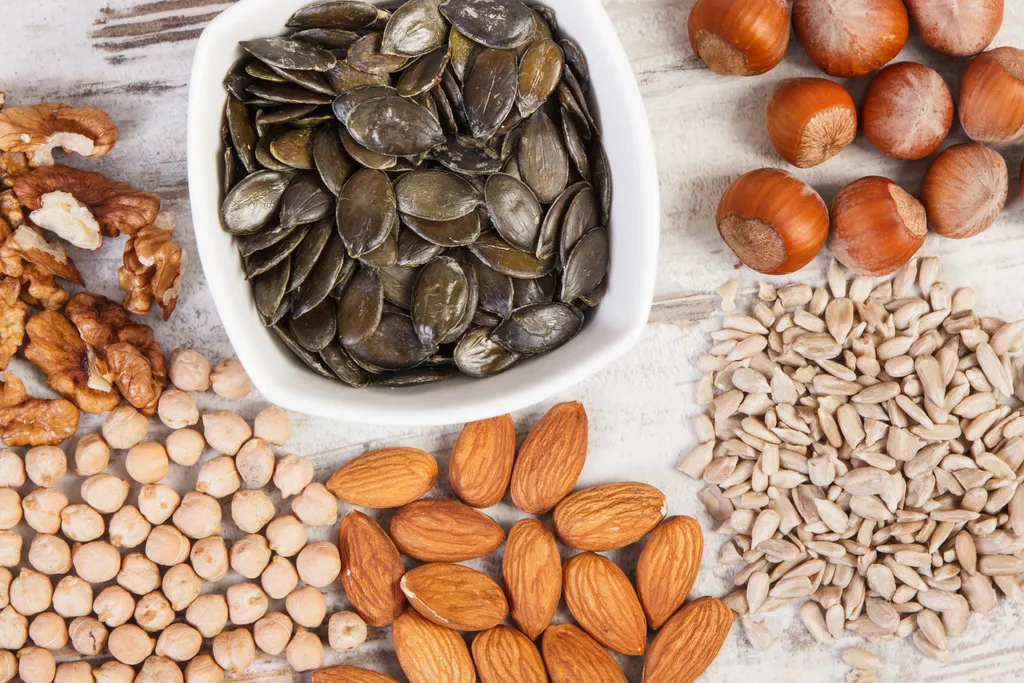
People love nuts and seeds because they are small but packed with nutrients. They contain a lot of proteins, good fats, vitamins, and minerals. Because they can be used in so many different ways, they are a great addition to any diet, whether you eat them as a snack or add them to other recipes:
Almonds:
People who care about their health love almonds. Each 28-gram amount has about 6 grams of protein, vitamin E, and good monounsaturated fats.
Pumpkin Seeds:
Pepitas are another name for pumpkin seeds. They are a high-protein snack with about 7 grams of protein per ounce. They also have a lot of good fats, magnesium, and iron.
Chia Seeds:
There are a lot of people who love chia seeds because they are very healthy and have 4 grams of protein per ounce. They also have a lot of omega-3 fatty acids and can soak up a lot of water, which helps keep you hydrated.
Walnuts:
Walnuts have a good balance of proteins and omega-3 fatty acids, which is good for your heart. There are 4.5 grams of protein in about a quarter cup of these nuts.
Sunflower Seeds:
Sunflower seeds are more than just a quick snack. Each ounce has about 5.5 grams of protein. In addition, they have a lot of vitamin E and selenium.
Flaxseeds:
Flaxseeds have 5.1 grams of protein per ounce and are known for having lignans and omega-3s. Ground flaxseed can be easy to digest, and it mixes well with foods like soups and yogurt.
Eating several nuts and seeds regularly can help you get more protein and other good nutrients for your health.
Tofu and Soy Products:
Tofu and other soy products are essential to vegetarian and vegan diets because they are good plant-based protein sources and can be used in many recipes. These foods are made from soybeans, which are a complete protein source that contains all nine necessary amino acids:
Tofu:
Tofu, sometimes called “bean curd,” is made from pressed soybean curds and can be used in various ways. It has different thicknesses, from silky to extra hard, and each has about 8 grams of protein per 100 grams. You can grill, stir-fry, marinate, or mix tofu into soups.
Tempeh:
Tempeh is a fermented soy product that tastes slightly salty and chewy. Each 100 grams of tempeh has about 19 grams of protein. Due to the fermentation process, it is a nutritional wonder that also helps your digestion.
Edamame:
Young soybeans are called edamame. They are usually cooked or boiled and served with salt. These are a tasty snack and high in protein, with 11 grams of protein per 100 grams.
Soy Milk:
Soy milk, which comes from soybeans, is a popular choice for dairy milk. Each cup of soy milk has about 7 grams of protein. It’s often made healthier by adding calcium and vitamins, so people who don’t eat dairy can still enjoy it.
Textured Vegetable Protein (TVP):
TVP is a dehydrated soy product with a lot of protein—about 12 grams per 1/4 cup after rehydration—making it a great meat replacement. People often cook with it because it takes on the taste of what they cook it with.
Adding these soy products to your diet can help you get a lot more protein, which makes them perfect for people who want to avoid meat or get more protein from different sources.
Quinoa: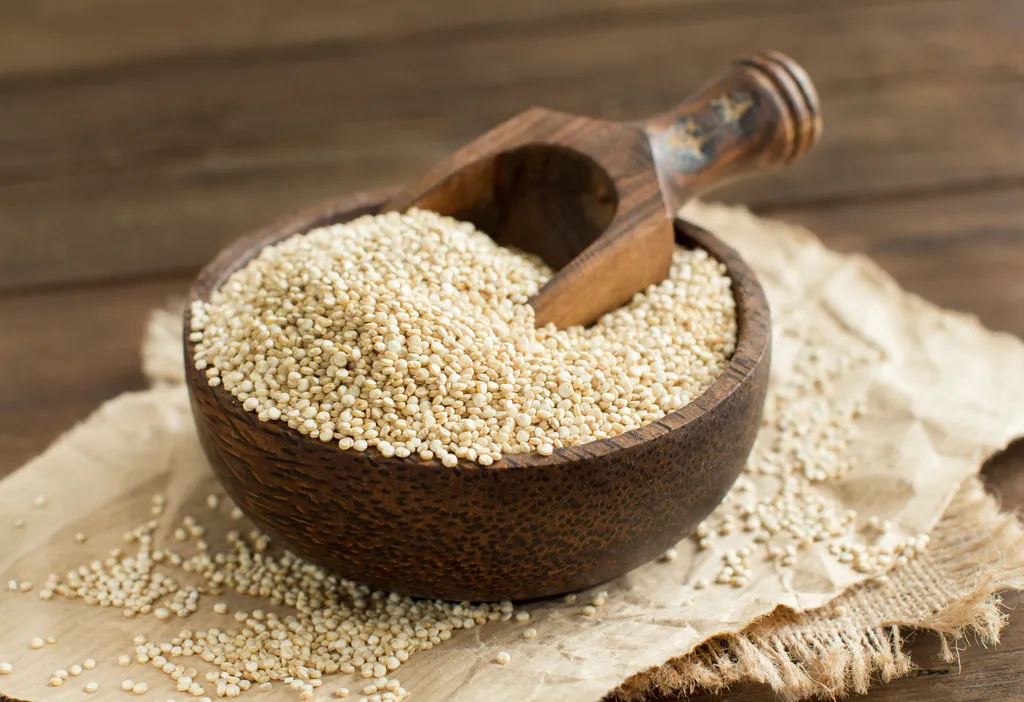
Quinoa is a unique whole grain because it has all nine necessary amino acids and proteins the body can’t make. Some important things about this healthy fruit are listed below:
Complete Protein Source:
About 8 grams of protein are found in one cooked cup of quinoa. This makes it one of the few plant-based foods with a complete protein makeup like meat and dairy.
Rich in Fiber:
Because it has almost 5 grams of dietary fiber per cup, quinoa is suitable for your gut health, helps keep your bowels regular, and makes you feel full, which can help you control your weight.
Gluten-Free:
Because it doesn’t contain gluten, quinoa is an excellent food for people with celiac disease or who are gluten-free because it ensures they don’t miss out on essential nutrients.
High in Minerals:
It has a lot of vitamins like magnesium, iron, zinc, and manganese, which often need to be added to modern diets, especially those that are vegetarian or vegan.
Versatile in Cooking:
You can use quinoa in many recipes, from salads and soups to stir-fries and breakfast porridge. This makes it a versatile grain that can be used in many ways in the kitchen.
Antioxidant-Rich:
Antioxidants, such as quercetin and kaempferol, found in large amounts in this superfood have been linked to anti-inflammatory, antiviral, and anti-cancer benefits.
Greek Yogurt:
Greek yogurt is not only thick and tasty, but it’s also a great source of protein, especially for people who like to get most of their protein from dairy:
High Protein Content:
Based on the brand, you can expect to get about twice as much protein from Greek yogurt as from regular yogurt—about 15 to 20 grams per 6-ounce serving.
Rich in Probiotics:
Greek yogurt has live, active cultures that are good for gut health. These cultures can help digestion and boost the defense system.
Calcium-Rich:
It has a lot of calcium, which is essential for keeping bones healthy and the metabolism working well.
Lower in Lactose:
Regular yogurt has more lactose than Greek yogurt, so people sensitive to lactose may be able to handle Greek yogurt better.
Reduced Sugar and Carbohydrates:
Because it is strained, Greek yogurt usually has fewer carbs and less sugar than regular yogurt, which is suitable for people watching how much sugar they eat.
Versatility in Recipes:
Because it is thick and creamy, it can be used instead of sour cream or mayonnaise in many recipes to add creaminess without too much fat.
Assorted Flavors and Uses:
Greek yogurt comes in both plain and flavored types. It can be eaten by itself, mixed with herbs and spices to make a savory dip, or added to smoothies and sweets.
Protein-Rich Vegetables: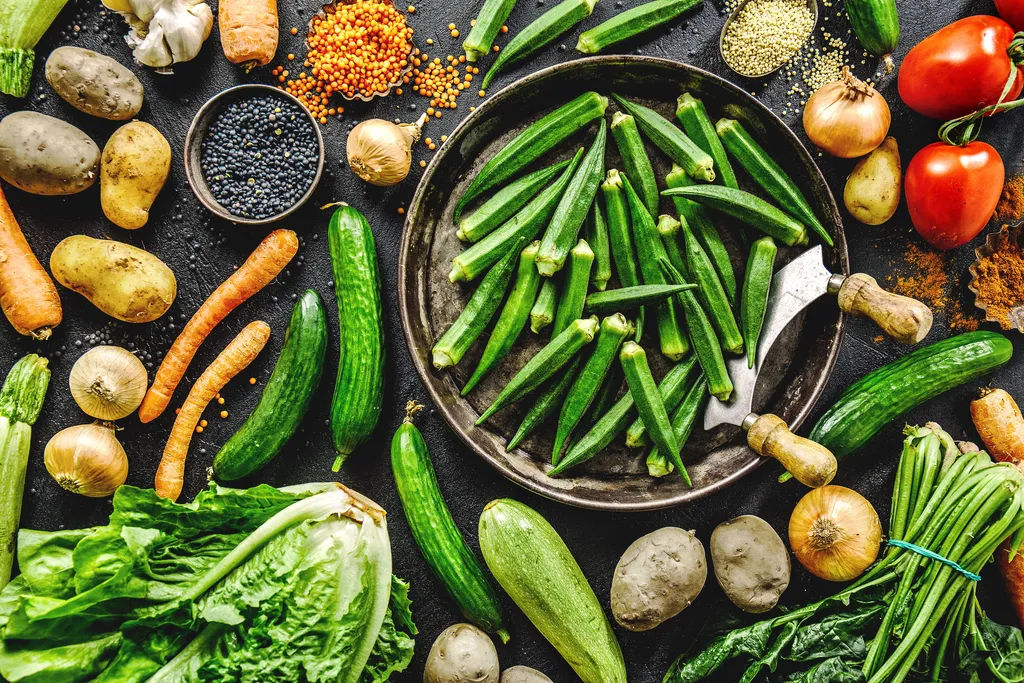
When preparing a balanced diet, vegetables should be considered protein sources, vitamins, and minerals. Even though they have less protein than meat or dairy, certain veggies can meet your daily protein needs. The following plants are high in protein:
Spinach:
Leafy greens like spinach are very high in protein. When cooked, 100 grams of spinach has about 3 grams of protein. It’s also a great way to get minerals and vitamins.
Broccoli:
Broccoli has a lot of good things for you, like fiber, vitamin C, and vitamin K. It has about 2.8 grams of protein per 100 grams.
Sweet Corn:
Sweet corn is an excellent choice to get protein from plants. Each 100 grams of corn has about 3.3 grams of protein.
Potatoes:
A medium-sized potato can have around 4 grams of protein. It also has a lot of iron and vitamin C.
Brussels Sprouts:
There are a lot of healthy substances and vitamins in these little cabbages. Each 100 grams has about 3 grams of protein.
These veggies are not complete proteins, which means they do not have enough of all nine necessary amino acids to be considered proteins. Adding them to a meal with other protein sources, on the other hand, can help make sure you get enough protein.
Conclusion
We’ve seen that many different things can help you meet your daily protein needs. Proteins in Greek yogurt and quinoa are vital and help build muscle. Vegetables like broccoli and spinach have more subtle proteins that are high in nutrients. A balanced and varied diet can meet the protein needs of people with different lives and food tastes. Adopting these other protein sources is good for your body and can help you try new things in the kitchen, leading to tasty and healthy meals for everyone.
Frequently Asked Questions
Q1: What are complete proteins, and why are they important?
Complete proteins include all nine necessary amino acids the body cannot generate. They grow and repair tissues, make enzymes and hormones, and support body activities. Quinoa and Greek yogurt are examples.
Q2: Can I rely on plant-based foods for my complete protein intake?
Most plant-based foods lack critical amino acids, but a well-planned vegetarian or vegan diet that includes grains, legumes, nuts, seeds, and vegetables can supply complete proteins.
Q3: Is eating animal protein necessary to meet daily protein requirements?
Daily protein needs don’t require animal sources. A varied and balanced diet can satisfy protein demands using plant-based proteins. However, animal proteins may be easier to digest and absorb and contain more protein per meal.
Q4: How can vegetables increase protein intake when they lack complete proteins?
Vegetables increase protein intake by adding amino acids. When eaten with grains or beans, they provide complete protein. Combining beans with sweet corn adds amino acid diversity.
Q5: Can Greek yogurt be a suitable option for those with lactose intolerance?
Straining makes Greek yogurt lower in lactose. Many lactose-intolerant persons prefer Greek yogurt. As tolerance levels vary, start with tiny quantities to test tolerance.
Q6: What role do antioxidants play in a protein-rich diet?
An antioxidant-rich diet reduces oxidative stress and inflammation, which can rise with animal protein consumption. Nutritional powerhouses like quinoa supply protein and antioxidants.

